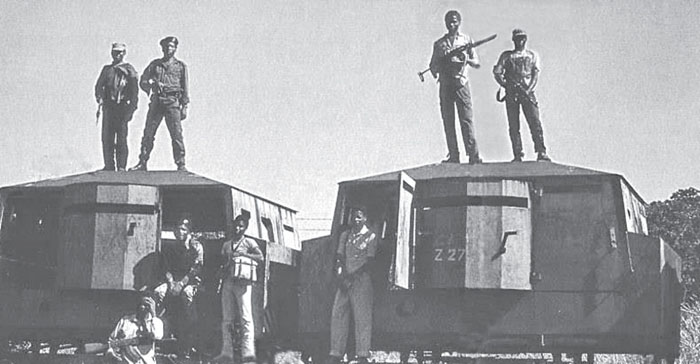
After Portugal granted independence to Mozambique on 25 June 1975, civil war broke out, which lasted up until 1992. The Limpopo railway line which ran between the port of Maputo and Zimbabwe, and also the line from Nacala in the north, were regularly subject to attacks, at least up until mid-1989. The locomotives were protected by steel plates, and the trains were preceded by ballasted flat wagons. The work of rebuilding the railway network began in 1990, with financial aid from several countries including France and India, under the protection of Zimbabwean troops.
Beginning in 1980, the company E C Lennings acquired several ex-Rhodesian armoured trolleys for use on the Beira corridor which linked Mutare to Beira. In 1992 the journalist Luca Poggiali published a study of the civil war in Mozambique, illustrated by a photo of an FPLM1 ‘armoured train’ captured by RENAMO.2 In addition, other means of protecting the rail traffic on this vital axis included reinforced bogie wagons armed with heavy machine guns.
SOURCES:
Lugan, Bernard, ‘1964-1992: Une Guerre de 30 Ans’, L’Afrique réelle No 56 (August 2014), pp 13–15.
Poggiali, Luca, ‘La RENAMO, victoire au bout du fusil’, Raids (November 1992), pp 34–8.
Afrique Defense: various numbers.

Part of the armoured train captured by RENAMO. It is likely that these two Wickham armoured hulls were Nos 191 and 192, built in 1969 and transferred to Angola via the Beira corridor.
(Photo: All Rights Reserved)